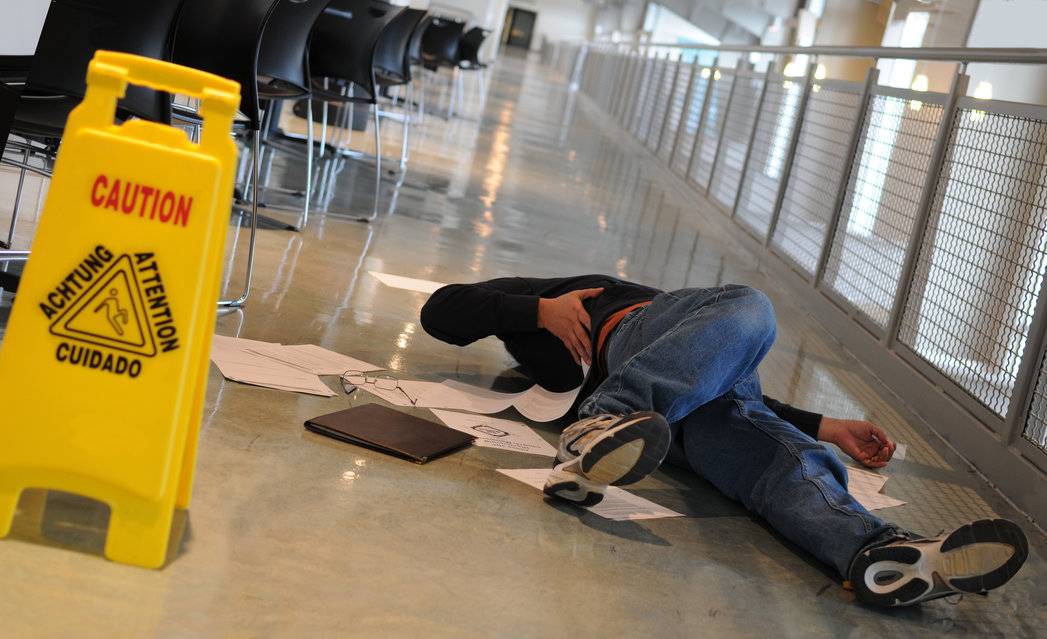Can I File a Claim for a Slip & Fall Accident Even if There Was a Wet Floor Sign?

Slip and fall accidents present tricky legal grounds through which you must navigate to secure the proper compensation for your injuries. Any fall you experience on someone else’s property provides the basic foundation on which you would be legally allowed to file a claim. However, there may be underlying details that weaken your claim’s validity. For example, one core component of successful slip and fall lawsuits is proof of the property owner’s neglect to warn visitors of hazardous walkways. Even if there is a visible “Wet Floor” sign, it is critical to have all the absolute clear evidence to prove negligence in your slip and fall accident claim so that you may receive compensation for your injuries.
The basis of a slip and fall accident is as follows: You were on property that belongs to someone else, and while on that property, you were exposed to a slippery or otherwise hazardous surface, which caused you to fall, and perhaps, sustain injuries. With this basic definition, it may seem that you have the right to file a claim regardless of whether a “Wet Floor” sign was up or not. Yet, this is not true. This becomes apparent when looking at the necessary components of a successful slip and fall case, one of which is the proof of the property owner’s negligence.
If one is to allow others to visit a building or a gathering area in their possession, it is their responsibility to provide a safe environment in which those visitors can walk and congregate without the risk of injury. This is known as the property owner’s “duty of care.” If they breach this duty of care, they can be held liable for any injuries incurred in a slip and fall accident. To prove such negligence, you will need to demonstrate all the following elements in your case:
- The property owner had a duty of care to their visitors.
- The property owner neglected to fulfill this duty of care.
- This neglect was the direct cause of your fall.
- The resulting fall caused further damages (i.e., pain and suffering, financial losses, etc.).
The most important element here is the proof that the property owner breached their duty of care. This is where the “Wet Floor” sign comes into play, as it is an element that enables the property owner to fulfill this duty.
How a “Wet Floor” Sign Can Void Liability
The “Wet Floor” sign is critical in providing the legal basis for the property owner to defend themselves against any accusations of neglect. The entire purpose of this sign is to warn the public about a potentially hazardous surface. It provides critical information that visitors can choose to use at their own discretion by either walking carefully over the surface or avoiding it altogether.
Part of the property owner’s duty of care is to provide such warnings. Thus, if they positioned this sign in a visible location, then you would potentially have no grounds on which to sue them. Visibility is the key, however, since a sign that was placed in a hard-to-see area, or even one that did not have legible text, will not be considered appropriate notice. In such a case, you would have the right to file a claim against the negligent property owner.
Consult with a personal injury attorney to gain further clarity on whether you are justified to pursue legal action against a property owner in such an accident.